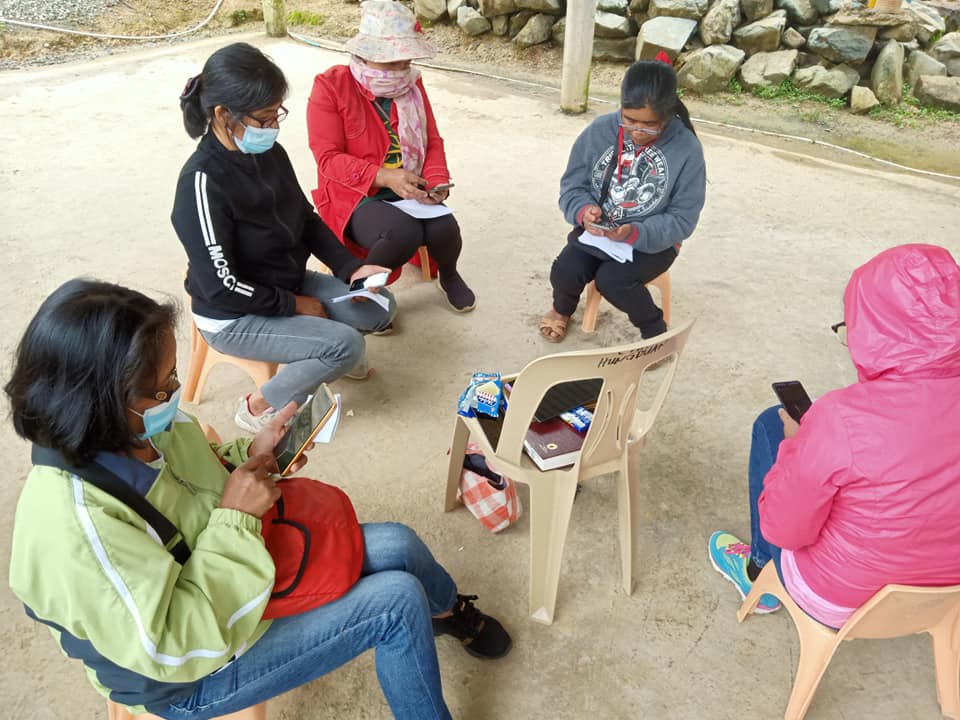Dr. Selva Ramachandran, UNDP Philippines Resident Representative
Growing the Platform Economy
April 27, 2023

Manobo women learning how to use digital platforms to sell their community products
Like the rest of the world, COVID-19 has widely impacted people in the Philippines, especially the vulnerable sectors such as the poor, the elderly, women, and children. Labor and employment in the country have been transformed by the indelible impact of the pandemic. In April 2020, the country experienced a slump in employment with the unemployment rate reaching as high as 17.7 percent. The underemployment rate was high at 18.9 percent in April 2020 (vs. 13.5 percent in April 2019). Furthermore, during the enhanced community quarantine implementation, 2/3 of businesses were pushed to stop their operations. Despite these losses, Filipinos were quick and steadfast to adjust. Among the measures quickly adapted during such unprecedented times is to shift to digital.
Despite long-standing barriers to the mass adoption of digital technologies, the Philippine government’s imposition of lockdowns in response to the COVID-19 pandemic has facilitated a dramatic expansion of the country’s platform economy.
Many businesses, including those of small entrepreneurs, began to use digital technologies to make their businesses thrive. These new age entrepreneurs include Filipinos who had recently started a business after losing their jobs to the pandemic. In a UNDP Rapid Response Survey of MSMEs, digitalization was the most popular demand strategy for both female (70 percent) and male (52 percent) respondents (or 62 percent overall). Shifting to a digital economy by providing digital training and expanding internet connectivity to MSMEs was considered vital in facilitating national economic recovery.
The UNDP report titled “Placing the Platform Economy: Gender, Digital Divides, and the Geography of Platform Participation in the Philippines” highlights the rapid growth of the use of digital platforms for business, commerce, or social interactions or what can be called as the Platform Economy. It especially tells the story of how digital platforms have been used by women in the Philippines to cope with the COVID-19 crisis, especially on ensuring financial stability, balancing their responsibilities (such as care work, community, or other economic responsibilities), or upgrading their skills. Platform Economy is seen to be a great equalizer – enabling women and other sectors to access more opportunities to contribute to economic activities, while also juggling other responsibilities.
The rapid growth of the platform sector could come with substantial “gender dividends”, given the greater rate of women’s participation, lower pay gaps, and increased flexibility that can allow women to finesse their care and economic responsibilities.
These trends have fueled debates on how these forms of digitalization might reshape countries’ economic geography and open new channels for recovery in the post-pandemic period. On one hand, the integration of economic activities into digital platforms has been hailed by observers for its potential to reduce transaction costs, improve productivity and efficiency, create new tax bases, and generate new jobs and commercial opportunities in information and knowledge-intensive industries. On the other, the platform sector’s transformative potential is widely recognized to be constrained in the short term by severe digital divides.
It bears emphasizing that there is great economic potential for the country to go beyond closing the digital divide by having a localized approach to promoting inclusion in digital interventions. The role of a more place-based, localized approach to promoting inclusion—especially critical in light of local government resources increasing due to the Mandanas transition—is likewise borne out by the Philippines’ largest success to date in encouraging the growth of knowledge economy opportunities nationwide: the business process outsourcing sector.
Suffice to say, the Philippines has a growing need and potential for digitalization. Now more than ever, we need to be committed and steadfast in strengthening partnerships and the technical support to provide the much-needed assistance in making this digital shift in the Philippines successful and effective.

 Locations
Locations



